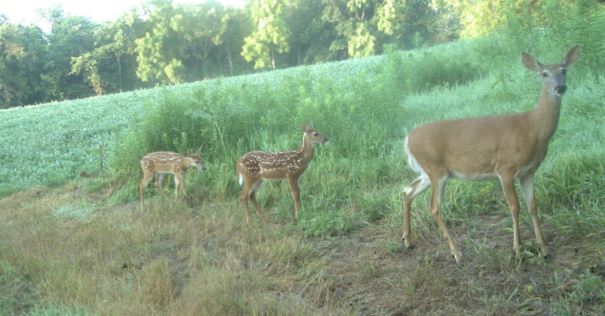Supplemental Feeding for the Wildlife Tax Exemption in Texas
Landowner: We want to convert our property to the wildlife tax valuation and manage our property for wildlife. Our property is 48 acres in size and is located in Hopkins County, Texas. The property is 75 percent wooded with mostly hardwoods such as post oak, hickory, etc. and lots of underbrush. There is one exisitng pond probably 1/2 acre in size.
We have lots of feral hogs and whitetail deer in the area, have feeders and will be putting out a hog trap or two. We are also considering bird houses. Can supplemental feeding also work with the predator shooting and hog trapping and bird houses?

On the Supplemental Feeding of Wildlife for Tax Valuation
WildlifeExemption.com: Supplemental feeding can occur on your property, but it would have to be for smaller animals such as birds to get credit under the wildlife tax valuation. You can use free-choice bird feeders to accomplish this. Management activities can be performed for white-tailed deer, but the plan for your property can not be directed towards deer management.
This is because the Texas Administrative Codes says that a “tract of land must be actively managed to sustain a breeding, migrating, or wintering population of indigenous wildlife.” On properties less than a couple hundred acres in size, a “breeding population of deer” will not remain on a property of that size, unless of course it is high fenced. Whitetail does regularly have home ranges of 300 to 500 acres. Bucks of course use larger areas, from 500 to 1,500 acres or more!
Is Supplemental Feeding Appropriate?
I assume that the supplemental feeding you referred is for deer, but unfortunately supplemental feeding can not be used as a qualifying practice for deer because of the loose acreage restriction/argument. On properties where this practice can be used, landowners must feed free-choice pelleted feeds of at least 16 percent protein year-round to qualify under supplemental feeding for white-tailed deer. It would not hurt to put supplemental feeding in your management plan, but we will also have to write in three qualifying management practices in the plan as well.
We charge a $349 fee for customized wildlife management plans (with no hidden charges) that will allow your property to qualify for the wildlife tax valuation. We have a good working knowledge of most parts of the state so we DO NOT typically make site visits, but we can if requested. Every management plan for every property that we have ever worked with has been accepted by the county appraisal district, regardless of county. We know what we’re doing.
For site visits, we charge $80 per hour and $0.55 per mile. We provide the most economical wildlife exemption plans, but it is important to note that we do not represent you or your property to the appraisal district nor do we file your plan for you. We can develop a specific, qualifying management plan for you that will allow you to meet the requirements for the wildlife tax valuation.
Related Wildlife Exemption Articles
